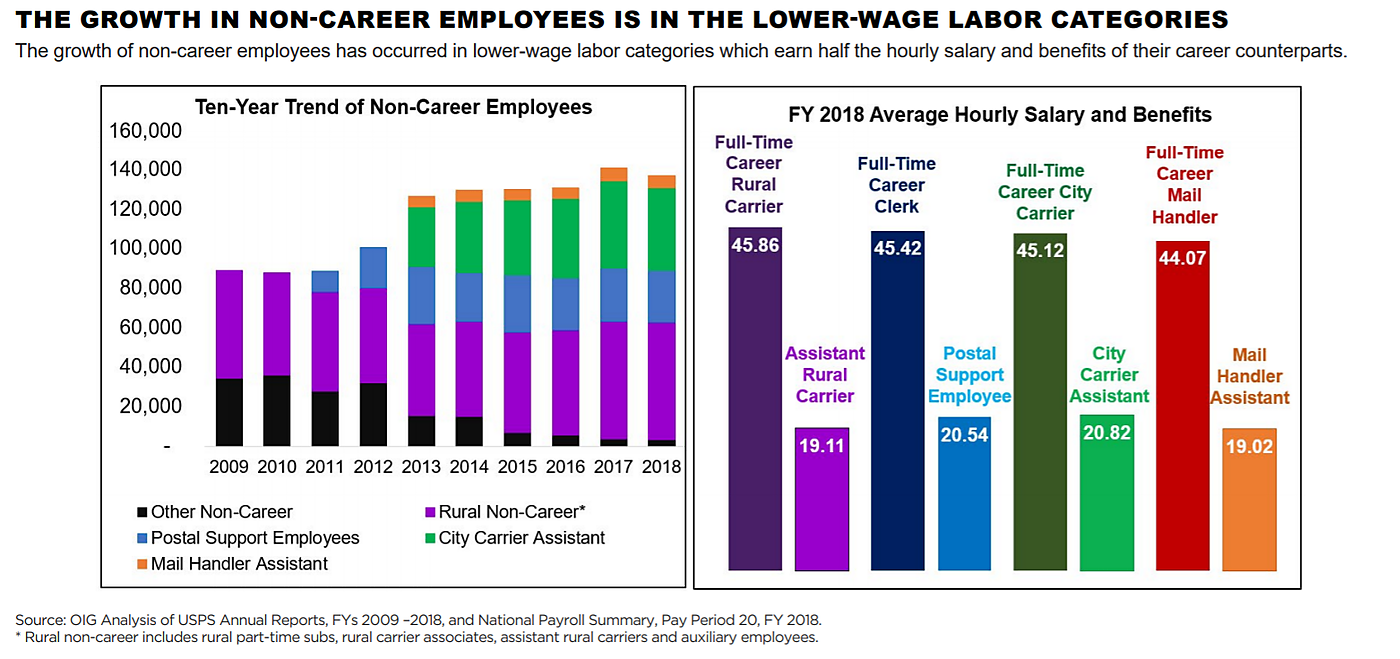President Trump has reignited a feud with the U.S. Postal Service calling it “a joke” the other day. He does not like Amazon’s delivery deal with the USPS and is withholding $10 billion in aid to the government-owned postal company. Trump uses harsh rhetoric but sometimes he spotlights an important issue that other politicians have ignored.
The USPS is in deep trouble. First-class mail volume has fallen 47% since 2001 because of the rise of email and other internet services. First-class mail is the USPS’s most profitable product, so the decline has generated a decade of losses at the company. COVID-19 is compounding the problems. The head of the USPS said that the crisis is having a “devastating effect on our business.”
I examined the USPS crisis and Trump’s comments in the New York Daily News.
After reading my piece, a retired postal worker in Minnesota sent me a note saying, “always flying under the radar is the absurdly bloated and overpaid USPS management infrastructure that you find nationwide. The union representing workers / the common folk / are not overpaid. It’s the management that drastically needs to be cut size wise and salary wise. … UPS and Fed Ex would never tolerate it.”
Is USPS management “absurdly bloated”? The organization has 634,000 workers and labor costs are 76 percent of total costs. The USPS has a heavily layered structure covering 7 areas, 67 districts, and 31,000 facilities with both functional and operational managers.
The USPS Inspector General issued a report on the company’s workforce covering 2009 to 2018. The report does not directly answer the bloat question, but does include useful data:
- Labor Costs. Inflation-adjusted labor costs fell 14 percent over the decade, while mail volume dropped 17 percent.
- Size of Workforce. The workforce shrank from 712,000 to 634,000 workers over the decade and shifted to less expensive “noncareer” staff. The noncareer share of the workforce rose from 13 percent to 22 percent. Career employees earn twice what similar noncareer employees earn, as shown in the chart below.
- Size of Management. The USPS did not appear to get more top heavy over the decade. I summed the number of career employees who are in headquarters and area offices, or are postmasters, supervisors, or managers. This management group was 10 percent of the workforce in both 2009 and in 2018.
- Retirement Costs. Retirement costs are 24 percent of total USPS labor costs. The company has more than $100 billion in unfunded retirement costs.
- Productivity Variations. Labor costs compared to mail volumes vary dramatically across the country, which suggests that efficiency could be improved in some places. A separate 2019 report on USPS productivity also finds wide geographical variation.
- Overtime Costs. These costs have risen and appear to be excessive in some areas. Overtime as a share of total worker hours varies from less than 6 percent in the Northern Plains to as much as 18 percent in some areas of California, the Northeast, and southern Florida.
- Employee Grievances. The number of employee grievances has soared from about 110,000 to 180,000 a year, even though the number of USPS employees has fallen. The USPS paid out $1 billion for grievances over the decade.
I do not know how much management bloat the USPS has, but management appears to have been a stable share of the workforce over the decade. However, there are workforce issues that need addressing, such as the rising costs of grievances, the lower productivity in some areas, and the high overtime costs in some areas.
The USPS has cut its workforce, shifted to noncareer staff, and consolidated routes to save money. It has proposed other cost-cutting reforms—such as reducing delivery days and closing little-used post offices—that Congress has blocked. It is mainly politicians of both parties who are to blame for the crisis at the USPS, not the USPS itself.
The way forward for the nation’s postal services is privatization and competition. That reform approach would give the USPS the flexibility it needs to further cut costs, to innovate, and to develop new sources of revenue in the internet age.

